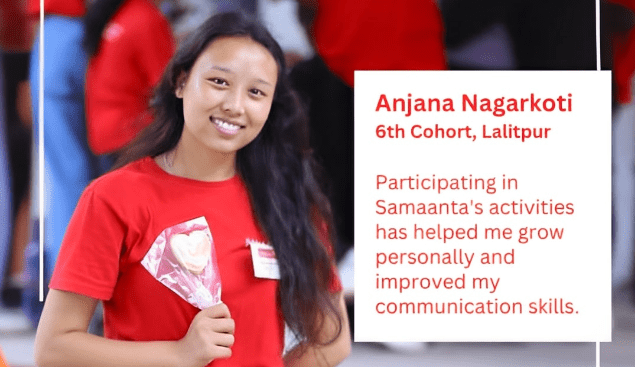Latest posts
- Policy documents: UNICEF Innocenti Discussion Paper on Children and Youth Participation (August 2025) 26 August 2025
- MAP International Online Conference 2025: Session Summaries Report 24 July 2025
- MAP 2025 Conference Highlights: Recordings and Slides 23 July 2025
- Journal article: Reimagining Peace Education in Nepal: Arts-Based, Learner-Centric Pedagogy for Social Justice and Equity 13 July 2025
- Curricula: Mithila art-focused local curriculum in Nepal 2 July 2025
- MAP International Online Conference 2025 1 June 2025
- Policy brief: Gira Ingoma book and policy brief: “The Culture We Want, for the Woman We Want” 28 November 2024
- Manuals and toolkits: GENPEACE Children’s Participation Module in the Development Process 13 November 2024
- Journal article: [Working Paper] Gira Ingoma – One Drum per Girl: The culture we want for the woman we want 30 October 2024
- Curricula: Beyond Tradition: Psychosocial Model 30 October 2024
- Curricula: Beyond Tradition Module: Revitalizing Lenong as a Model for Teaching Betawi Arts 30 October 2024
- Curricula: Beyond Tradition: Lenong Revitalisation as a Model for Teaching Betawi Cultural Arts 30 October 2024
My Hetauda Experience
19th July 2023
Anjana Nagarkoti
Anjana Nagarkoti, a youth researcher, shares her experience on how art-based learning methods can be an effective way to create social awareness among young people who want to learn and contribute to bringing change in their community. Here, she shares her 4-day research experience where she observed the learning style of the young participants at Jana Jagriti Secondary School, Hetauda in Nepal.

Anjana Nagarkoti, 6th Cohort of young researchers (YAARs)
Mobile Arts for Peace (MAP) is a research project led by the University of Lincoln that focuses on empowering young people through art-based methods to have a deeper knowledge of the policies that affect them. Our team was led by Karkhana Samuha with co-investigators from Kathmandu University and Midwest University, specifically exploring the possibilities of involving youth to improve the education system in Nepal.
In the Youth Advisory Advocacy Research (YAAR) project, I worked with a talented and creative group of 30 members. I worked closely with a team of seven people for this project. For this research project, we led an art-based community programme to explore the use of theatre-based methods for effective learning at Jana Jagriti Secondary School in Hetauda and studied its effects and efficacy.
I along with a team member, studied the nature of participation as well as the effectiveness of reception of the information by participants, while the other 4 members facilitated the program. We had a total of 15 participants from grades 6, 7 and 8.
Initially, the participants were hesitant to interact with the team. However, the programme had been designed to take this possibility into account. The facilitators started with several ice-breakers such as introducing themselves with adjectives and actions and playing games to lighten the atmosphere, which made everyone enthusiastic and interested throughout the session.
During the session, participants had to work in teams, and they acted as clay and sculptures to present social issues. They shared different perspectives on the displayed pictures and were able to understand social issues and brainstorm solutions. They talked about a variety of social issues, including drug addiction, caste discrimination, child marriage, conflict in neighbourhoods, violence against women, sexual harassment, and child labour. They shared their ideas using several art-based methods to do so more effectively, and they even encouraged each other to engage. Overall, they did a great job presenting social issues and their solutions. Some of the solutions presented by the students were: Drug addiction can be reduced by prioritizing the need for education among children, child marriage can be potentially solved by making parents aware of relevant laws and encouraging them to educate their children, etc. This experience has reinforced the idea that using images and art is a great way to understand and communicate social issues.
We were informed that it was the first time these students were participating in a program conducted by an external organization. As a researcher, I observed that the participants were able to express their problems to their friends and actively participate in group activities. Through this, I learned that everyone has a different and unique perception to understand the same thing. I also understood that a blanket approach to learning is not effective if we want to ensure a higher success rate am. Thus, learning can happen in several ways, including through art-based methods. It was interesting to note that even though everyone was taught the same thing, each participant had different learnings and takeaways from the session.
The participants expressed their thoughts that go along with their studies, they also needed some extracurricular activities so they can better focus on their studies. They were able to express what they wanted using an art-based method. Everyone expressed that they found it easier to understand and remember things through the use of art-based tools in learning, showing its effectiveness.
This blog was originally produced on the Samaanta Foundation website (June 26th 2023)

Inter-generational Dialogue
Facilitating inter-generational dialogue through a co-created participatory arts-based community curriculum.
